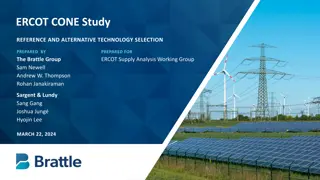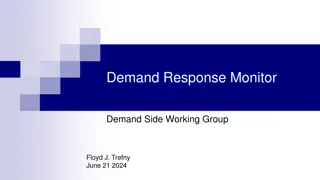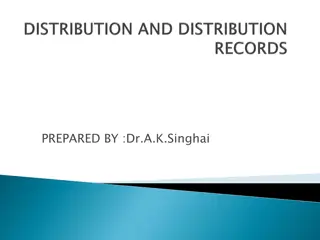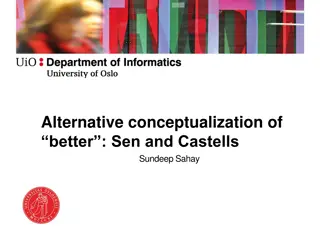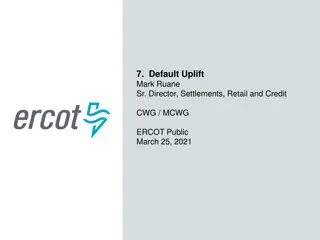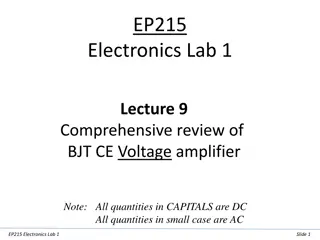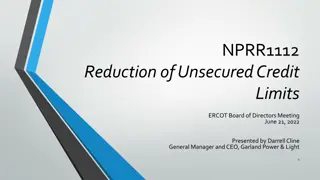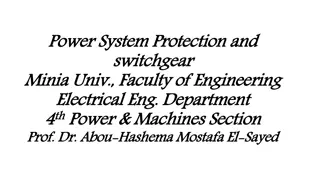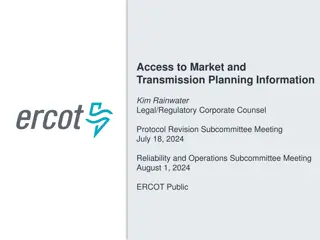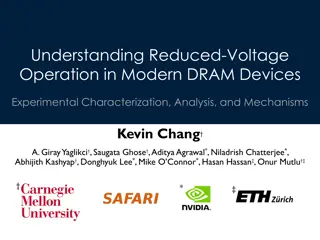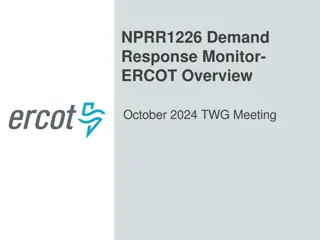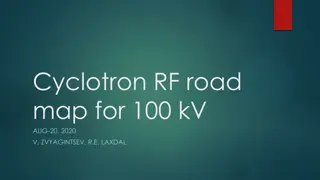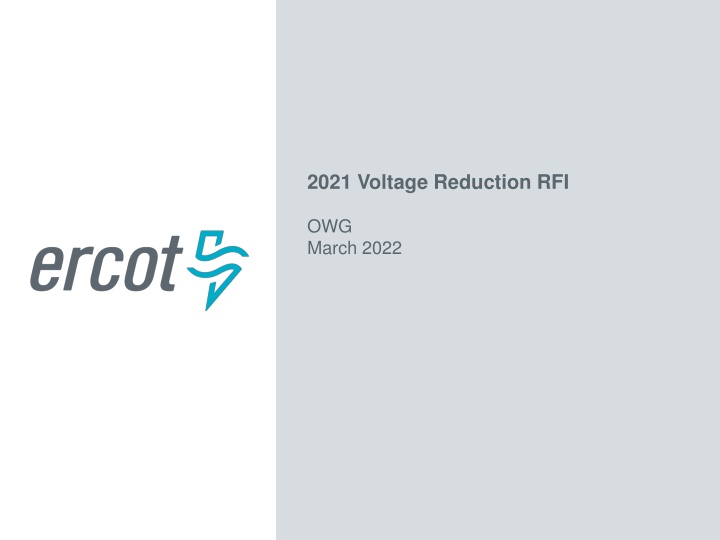
ERCOT Distribution Voltage Reduction Capability & Implementation
The content delves into ERCOT's Distribution Voltage Reduction (DVR) program, highlighting the capabilities, responses, and implementation factors. It covers the response times, load compositions affecting DVR capability, and the influence of distributed generation penetration on DVR effectiveness.
Download Presentation

Please find below an Image/Link to download the presentation.
The content on the website is provided AS IS for your information and personal use only. It may not be sold, licensed, or shared on other websites without obtaining consent from the author. If you encounter any issues during the download, it is possible that the publisher has removed the file from their server.
You are allowed to download the files provided on this website for personal or commercial use, subject to the condition that they are used lawfully. All files are the property of their respective owners.
The content on the website is provided AS IS for your information and personal use only. It may not be sold, licensed, or shared on other websites without obtaining consent from the author.
E N D
Presentation Transcript
2021 Voltage Reduction RFI OWG March 2022
Disclaimer Of the 172 RFIs sent to TDSPs, 54 responses were received. All TOs responded, but many small local TSPs and DSPs (municipalities and co- ops) did not respond. Some TOs responded that they do not provide service at distribution voltage and have no Distribution Voltage Reduction (DVR) while their member TSPs and DSPs responded that they do have DVR. All values are slightly higher than values in February 2022 OWG meeting slides due to additional responses and clarifications. 2 PUBLIC
ERCOT Distribution Voltage Reduction (DVR) Capability Summer Winter ERCOT System Load (MW) 60,000 70,000 80,000 55,000 65,000 75,000 1. Loads with DVR Capability (MW) 17,538 20,715 23,958 16,903 20,214 23,596 i) SCADA Controlled (MW) 7,183 8,459 9,752 8,278 9,882 11,514 2. Estimated Total MW Reduction From DVR 453 551 655 459 564 674 i) SCADA Controlled (MW) 193 243 298 238 298 363 ii) Manual (MW) 260 308 357 222 266 311 Many entities have defined voltage reduction percentages. Most DVR programs starts at 2.5%. o Examples: o TO1 only has 1% voltage reduction. o TO2 only has 2.5% voltage reduction. o TO3 only has 2.5% and 5.0% voltage reduction. At 5% Voltage Reduction, estimated MW reduction is less than 1% of ERCOT System Load. Benefit of DVR is slightly higher in winter than summer. Better response from resistive load. 3 PUBLIC
DVR Response Over Time Most of the SCADA-controlled DVR can respond within 15 minutes, but a small portion may take close to 4 hours to respond. Majority of Manual DVR requires 2 hours or longer to implement. More DVR are SCADA-controllable during winter than summer due to changes in load composition. 4 PUBLIC
Distribution Voltage Reduction (DVR) 7 out of 21 Transmission Operators (TOs) have DVR. Some TOs do not have DVR to implement in response to ERCOT instruction, but continuously uses the Volt/Var optimization program. One TO implements DVR only during summer. Maximum DVR duration typically ranges from 15 minutes to 4 hours. Typical response for TOs with the DVR program: Voltage Reduction Percentage DVR Response (Load Reduction %) At 1% <1% At 2.5% 1-2% At 5.0% 2-3% 5 PUBLIC
Distribution Voltage Reduction Implementation Factors Load Composition. DVR Capability may increase as the portion of: Resistive Load (lights, heaters) increases Industrial and Transmission Load decreases. Most of these loads are excluded from the DVR program. System Topology: Long radial lines reduce DVR Capability. Distributed Generation (DG) Penetration: Currently, TDSPs require DGs to operate at a unity power factor which decreases DGs MW output when voltage decreases. Some entities are working toward setting voltage setpoint instructions for DGs. 6 PUBLIC
Barriers to Increase DVR with SCADA Control Requires additional communication equipment and control updates. Multi-year, multi-million-dollar investment. Some RFI responses questioned the estimated benefits vs. cost. Physical Limitations: Existing Transformers Capability. Maintaining Voltage Limits especially for long radial circuits to prevent equipment damage. 7 PUBLIC

